Ya-Ping Sun9780824706517, 0-8247-0651-X
Table of contents :
SUPERCRITICAL FLUID TECHNOLOGY IN MATERIALS SCIENCE AND ENGINEERING: SYNTHESES, PROPERTIES, AND APPLICATIONS……Page 1
Preface……Page 3
Contents……Page 5
Contributors……Page 7
I. INTRODUCTION……Page 10
Contents……Page 0
II. SOLUTE–SOLVENT INTERACTIONS……Page 12
A. Kamlet-Taft Pi* Scale for Polarity/Polarizability……Page 13
B. Pyrene and the Py Scale……Page 18
C. TICT State Probes……Page 21
1. Unimolecular Reactions……Page 27
2. Vibrational Spectroscopy……Page 29
3. Rotational Diffusion……Page 31
E. The Three-Density-Region Solvation Model……Page 34
A. Entrainer Effect in Mixtures……Page 36
B. Bimolecular Reactions……Page 41
1. Excimer and Exciplex……Page 42
2. Photodimerization……Page 47
3. Fluorescence Quenching……Page 49
4. Other Bimolecular Reactions……Page 51
REFERENCES……Page 55
I. INTRODUCTION……Page 67
A. Chemical Shifts: Hydrogen Bonding……Page 69
B. Chemical Shifts: Solution Behavior……Page 72
C. Relaxation Time ( T1) Measurements……Page 73
D. Vapor Liquid Equilibrium Measurements……Page 76
E. Diffusion Coeficient Measurements……Page 79
F. Quadrupolar NMR Measurements……Page 80
A. Deuteration and Hydrogen Exchange Reactions……Page 81
C. Photolysis Reactions……Page 83
D. Homogeneous Catalysis……Page 86
IV. CONCLUSIONS AND FUTURE DIRECTIONS……Page 87
REFERENCES……Page 89
I. INTRODUCTION……Page 94
A. Properties of SCFs……Page 98
B. Potential Advantages of SCF Reaction Processes……Page 101
C. Phase Behavior……Page 103
D. Thermodynamic Pressure Effects on Reaction Rates……Page 104
E. Activation Volumes……Page 106
F. Clustering in SCF Media……Page 107
A. Carbon Dioxide as a C1 Building Block……Page 108
B. Hydrogenation……Page 113
C. Asymmetrical Hydrogenation……Page 118
D. Fischer–Tropsch Synthesis……Page 124
E. Hydroformylation……Page 127
F. Selective Oxidations……Page 140
G. Free-Radical Reactions……Page 147
H. Cyclization and Other Coupling Reactions……Page 148
I. Isomerization and Catalyst Deactivation……Page 154
J. Alkylation……Page 157
K. Esterification……Page 159
L. Amination and Ammonolysis……Page 160
M. Disproportionation……Page 162
N. Cracking……Page 163
O. Miscellaneous Reactions……Page 164
P. Phase Transfer Catalysis……Page 165
ACKNOWLEDGMENTS……Page 168
REFERENCES……Page 169
APPENDIX: A Summary of the Patent Literature on SCF Reactions ( 1990 – 1999)……Page 189
A. Introduction……Page 195
B. Advantages of Using scCO2 in Homogeneous Catalysis……Page 197
C. Ligand Modification for Solubility Enhancement……Page 201
A. Hydroformylation……Page 203
B. Oxidation……Page 211
C. Hydrogenation……Page 214
D. Hydrovinylation……Page 216
F. Diels–Alder Reactions……Page 217
H. Biphasic Systems……Page 218
IV. FUNDAMENTAL STUDIES……Page 219
V. EXPERIMENTAL METHODS……Page 221
VI. HIGH-PRESSURE PHASE BEHAVIOR……Page 225
REFERENCES……Page 227
I. INTRODUCTION……Page 233
II. THERMODYNAMIC FUNDAMENTALS OF SCF-SOLUTE MIXTURES……Page 234
A. Impact of Solvent Quality……Page 238
C. Impact of Polymer Architecture……Page 240
D. Impact of Chain End Groups……Page 241
E. Cosolvent–Antisolvent Effects……Page 242
F. Supercritical CO2……Page 243
IV. MATERIALS PROCESSING PRINCIPLES……Page 246
A. Organic Synthesis and Polymer Modi.cation……Page 254
C. Bone Replacement Materials……Page 255
E. Powder Coatings……Page 256
REFERENCES……Page 257
I. INTRODUCTION……Page 261
A. Properties of Carbon Dioxide……Page 263
B. Fluoroether-Based Surfactants……Page 264
C. Silicone-Based Surfactants……Page 266
D. Fluoroacrylates……Page 267
A. Protein Extraction……Page 269
B. Dispersion Polymerization……Page 271
C. Emulsion Polymerizations……Page 278
D. Metal Extraction……Page 279
A. Dry Cleaning……Page 280
B. Nanoparticle Formation……Page 281
C. Biocatalysis……Page 282
REFERENCES……Page 284
I. INTRODUCTION……Page 291
II. ELECTRICAL CONDUCTIVITY IN POLYMERS……Page 294
III. CONVENTIONAL POLYMERIZATION……Page 295
V. STABILITY……Page 298
A. Melt Processing……Page 299
C. Solution Casting……Page 300
D. Absorption Method……Page 301
E. Other Methods……Page 302
VII. BLENDING IN SUPERCRITICAL CARBON DIOXIDE……Page 303
VIII. RECENT STUDIES INVOLVING IN SITU BLEND FORMATION USING SUPERCRITICAL CARBON DIOXIDE……Page 304
A. Polymerization Experiments……Page 305
B. Blending Experiments……Page 306
C. Doping Experiments……Page 307
ACKNOWLEDGMENTS……Page 309
REFERENCES……Page 310
I. INTRODUCTION……Page 316
A. Reaction Equilibrium and Reaction Rate……Page 317
B. Phase Behavior and Solubility of Metal Oxides……Page 319
1. Ultrafine Particles Formation……Page 321
IV. APPLICATIONS OF THE METHOD FOR PRODUCING COMPLEX METAL OXIDES……Page 324
V. CONCLUSIONS……Page 328
REFERENCES……Page 329
I. INTRODUCTION……Page 331
II. MAGNETIC MATERIALS……Page 334
III. SYNTHESIS OF FERRITE NANOPARTICLES……Page 335
A. Precipitation……Page 336
C. Microemulsion Techniques……Page 337
IV. SYNTHESIS IN SUPERCRITICAL FLUIDS……Page 338
C. Rapid Expansion of Supercritical Solutions……Page 339
D. Aerosol Spray Pyrolysis with SCF……Page 340
V. FLOW PROCESS FOR THE PRODUCTION OF SPINEL IRON OXIDE……Page 341
A. Single-Oxide Results……Page 344
C. Discussion……Page 346
REFERENCES……Page 348
I. INTRODUCTION……Page 354
A. Spectroscopic Methods for Solubility Measurement……Page 356
B. Solubility Prediction for Metal Complexes……Page 361
III. FLUID EXTRACTION TECHNOLOGY FOR THE NUCLEAR INDUSTRY……Page 366
A. Reprocessing Spent Nuclear Fuels in Supercritical CO2……Page 367
B. Supercritical Fluid Treatment of Nuclear Wastes……Page 370
IV. WATER-IN- CO2 MICROEMULSIONS FOR MATERIALS SYNTHESIS……Page 372
A. Synthesizing Metal Nanoparticles in a Water-in- CO2 Microemulsion……Page 374
B. Synthesizing Metal Halide Nanoparticles by Mixing Water-in- CO2 Microemulsions……Page 375
C. Electrochemistry in Supercritical CO2 Utilizing Water- in- CO2 Microemulsion……Page 381
REFERENCES……Page 385
I. INTRODUCTION……Page 390
II. DESCRIPTION OF THE RESS PROCESS……Page 391
III. DEFINITION AND MEASUREMENT OF STAGNATION CONDITIONS……Page 395
A. Heat Transfer Considerations: A Zero-Dimensional Analysis……Page 399
B. One-Dimensional Analysis of Subsonic Expansion Inside the RESS Nozzle……Page 404
C. Estimating the Friction Factor and Heat Flux Inside the RESS Nozzle……Page 408
V. SUPERSONIC FLOW IN THE FREELY EXPANDING JET: A ZERO-DIMENSIONAL ANALYSIS……Page 411
VI. FLUID DYNAMIC CALCULATIONS FOR RESS: THE PLAIN ORIFICE VS. THE LONG CAPILLARY……Page 419
A. Background……Page 423
B. Controlling Particle Size in RESS: A Simpli.ed Model for Nucleation and Condensation……Page 427
NOMENCLATURE……Page 435
REFERENCES……Page 438
A. Background……Page 441
1. Rapid Expansion of Supercritical Solutions (RESS)……Page 442
2. Gas Antisolvent (GAS) Process……Page 443
3. Supercritical Antisolvent (SAS) Process……Page 444
6. Aerosol Solvent Extraction System……Page 445
7. Precipitation from Gas-Saturated Solutions (PGSS)……Page 447
A. Polymorphic Purity……Page 448
B. Processing Excipients from Aqueous Media……Page 453
C. Morphological Changes……Page 459
E. Chiral and Isomeric Separation……Page 463
2. Separation of Isomers……Page 464
3. Chiral Separation……Page 466
F. Proteins and Biologicals……Page 467
G. Formulations……Page 475
III. IN VITRO STUDIES……Page 477
IV. SCALE-UP……Page 481
A. Market Demand (Example)……Page 485
REFERENCES……Page 487
A. Supercritical Fluids……Page 493
B. Supercritical Fluid Processing Methods……Page 497
1. Inorganic Materials……Page 501
2. Polymeric Materials……Page 503
3. Organic Materials and Pharmaceuticals……Page 507
4. Particles of Mixtures and Composites……Page 512
1. Mixing and Precipitation……Page 517
2. Chemical Reduction……Page 518
B. Sonochemical Method……Page 523
1. Microemulsions Under Ambient Conditions……Page 527
2. The “Hot Soup”……Page 534
3. Microemulsions in Supercritical Fluids……Page 536
III. RESS-INTO-SOLVENT (RESOLV) METHOD FOR NANOMATERIALS……Page 539
A. Nanoscale Metals……Page 541
B. Nanoscale Semiconductors……Page 547
C. RESOLV with Microemulsions in CO2……Page 554
1. Dissolution of Metal Ions in Microemulsions……Page 557
2. RESOLV with Microemulsions for Nanoparticles……Page 560
2. Optical Limiting……Page 564
3. Polymeric Nanocomposite Films……Page 567
REFERENCES……Page 569
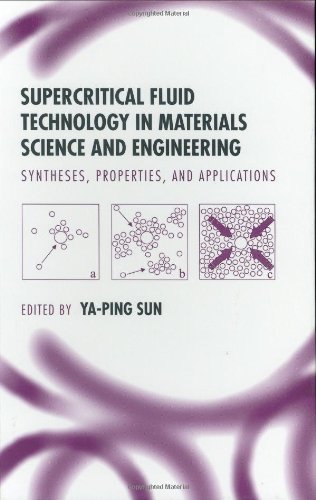
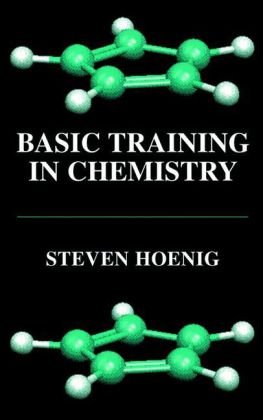
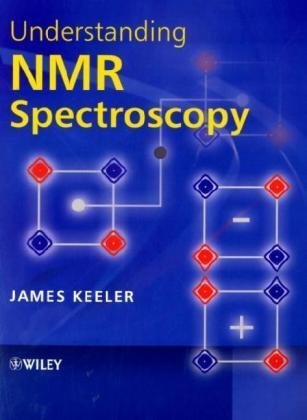
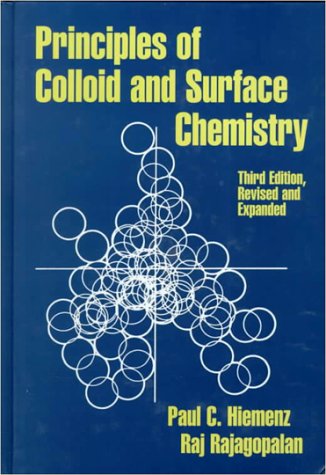
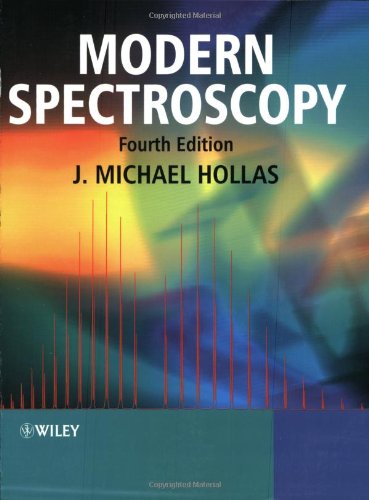

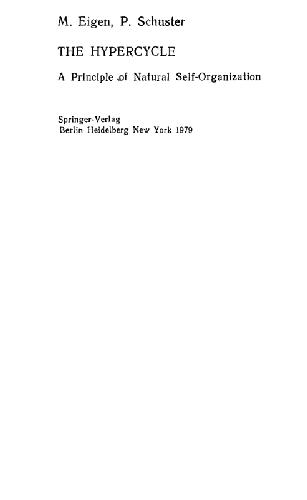
Reviews
There are no reviews yet.